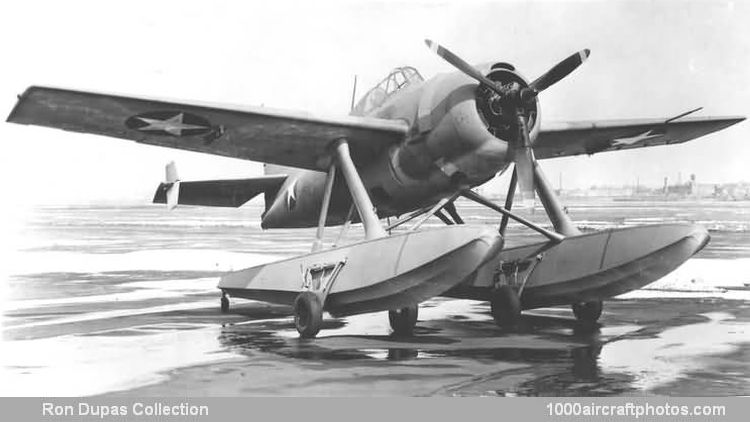02/28/2006. Remarks by Jack McKillop: "Prior to World War II, the Imperial Japanese Navy Air Service realized that they could be operating in areas without airfields and in the autumn of 1940, they issued a specification for a single-seat fighter seaplane that could provide air cover during amphibious operations or over smaller islands where airfields could not be built. Kawanishi began designing such an aircraft but it became obvious that the aircraft would not be ready by the start of the war so Nakajima was instructed to develop a seaplane version of the Mitsubishi A6M2, Navy Type 0 Carrier Fighter Model 21.
The A6M2 was given the Allied Code Name "Zeke" in 1942 although it was commonly known as the "Zero". Nakajima began work on this new aircraft in February 1941 and it was officially designated the Nakajima A6M2-N, Navy Type 2 Fighter Seaplane Model 11 and was assigned the Allied Code Name "Rufe" in 1942. A total of 327 "Rufe" were built and the US encountered them in the Solomon Islands in August 1942.
The USN captured a "Rufe" and was impressed with its capabilities and ordered that this F4F-3 Wildcat be converted to a F4F-3S seaplane fighter; the Navy also amended the contract for 100 long-range photographic reconnaissance F4F-7s to be delivered as F4F-3Ss. The 'Wildcatfish', as it was known, was fitted with a pair of Edo single-step floats and a pair of tail mounted auxiliary fins; a ventral fin was later added to improve yaw stability. Tests began on February 28, 1943 but the results were disappointing and the aircraft was not ordered into production.
Another reason for not ordering it into production was that by 1943 the Navy realized that more aircraft carriers would soon enter service and the Navy's famed Construction Battalions, or Seabees, could build suitable airfields in a short period of time and the need for a seaplane fighter had disappeared. The 100 F4F-7s which were to become F4F-3Ss were delivered as F4F-3s and used as training aircraft."
